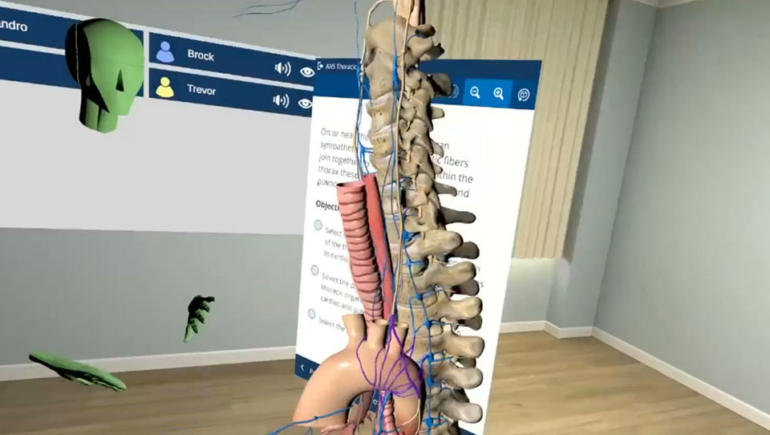Virtual reality is playing a big role in many fields. And now, it’s showing up at one medical clinic in the United States.
It’s part of a new program giving a traditional curriculum new life.
CGTN’s Frances Kuo traveled to Ohio’s Case Western Reserve University and Cleveland Clinic for a look.
It’s a moment medical students always remember: the first time they came face-to-face with a dead body.
“Of course, it’s humbling when you see a body in front of you, because this was a person. They had a whole life, hopes, dreams,” said Janet Adegboye, a student at the Cleveland Clinic Lerner College of Medicine. Adegboye is a fifth-year student and sees cadavers as an integral part of her medical training.
“Something that’s nice about traditional cadavers is that you can actually touch it and see how it would feel,” Adegboye said. “If you want to go into a surgical career, it’s important to really know the anatomy, to put your hands into it, because that’s what you will be doing.”
So you might wonder why she’s spending part of her class time using joysticks and headsets which are more common inside a gaming room, not a classroom.
“Sort of like opening a new computer, a little overwhelming to figure out how all the buttons work,” describes Adegboye.
At a new education campus at Ohio’s Cleveland Clinic and Case Western Reserve University, Adegboye is one of the first students viewing cadavers in a whole new light.
It’s a 3-D twist on getting up-close-and-personal with patients.
In this virtual world, Adegboye can dissect parts of the body, put them together, rotate them and zoom in – all impossible on a real cadaver. The technology relies on a virtual library of detailed images of the human anatomy.
“The pelvis might be the most difficult anatomy to see, so it’s nice that you can look right into it,” said Adegboye.
Another advantage is the ability for anyone around the world to participate.
Cory Heizenrader is President of Zygote Medical Education which partnered with the Cleveland Clinic.
“I can bring in students from anywhere in the world — and we do this right now — from Abu Dhabi to London to Hong Kong,” said Heizenrader. “We are delivering these labs to hospitals all over China, they have challenges right now with aging patients and with a deficiency with health care professionals, doctors and nurses. So they’re in great need of technology like this.”
Dr. Neil Mehta is Cleveland Clinic’s Associate Dean for Curriculum. Mehta sees huge potential for the program.
One common problem for medical schools: cadavers are in short supply.
“There’s the question of logistics, getting cadavers, having patients donate them, having enough cadavers to meet the needs of so many students,” said Mehta. “It’s just a huge task for any school or country that is not well-resourced to continue to do this.” Then, there’s the cost.
Mehta estimates the price tag to build a traditional cadaver-based anatomy lab would’ve been about $20 million. The VR curriculum costs a fraction of that, with the main expenses being the VR equipment and hardware.
“Each school’s investment would be minimal, if any,” explained Mehta. Cleveland Clinic isn’t the only medical school looking for ways to advance its medical programs.
Rutgers University in New Jersey has integrated virtual dissection tables based on body scans of real patients.
“When you take the fear of making a mistake out of the learning process, then the chances are good that they’ll spend more time — it makes them more likely to explore, more likely to take classes and take risks,” said Asst. Prof. Rebekah Thomas of Rutgers’ School of Health Professions in one of the University’s promotional videos.
Doctors are quick to point out that VR’s role should be to complement traditional cadavers, not completely replace them.
The aim is to strike a balance between tradition and technology, providing aspiring doctors with another tool to help save lives.
“We are always learning from our patients. And that message starts on Day One,” said Dr. Mehta.
Gerald Wang discusses how technology can help alleviate China’s health system challenges
CGTN’s Mike Walter talks with Gerald Wang, former chairman of the Environmental and Health Departments of the PRC, about how technology can help alleviate China’s health system challenges.
 CGTN America
CGTN America

